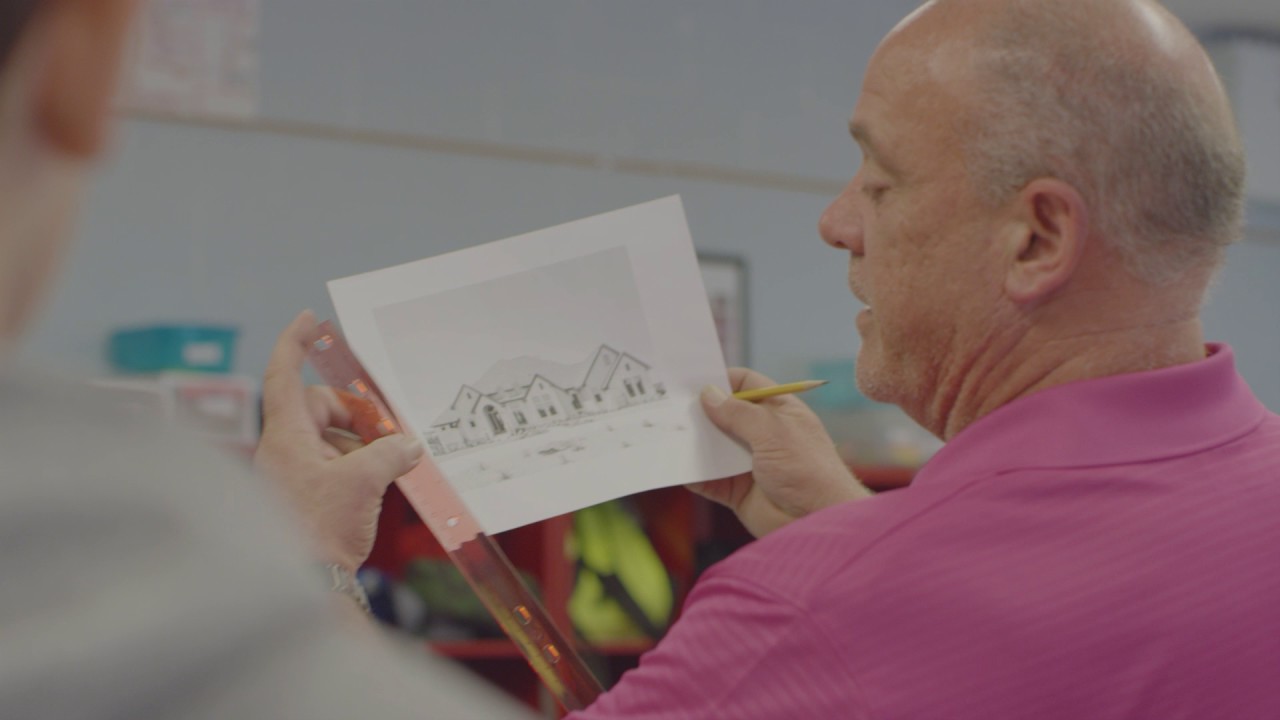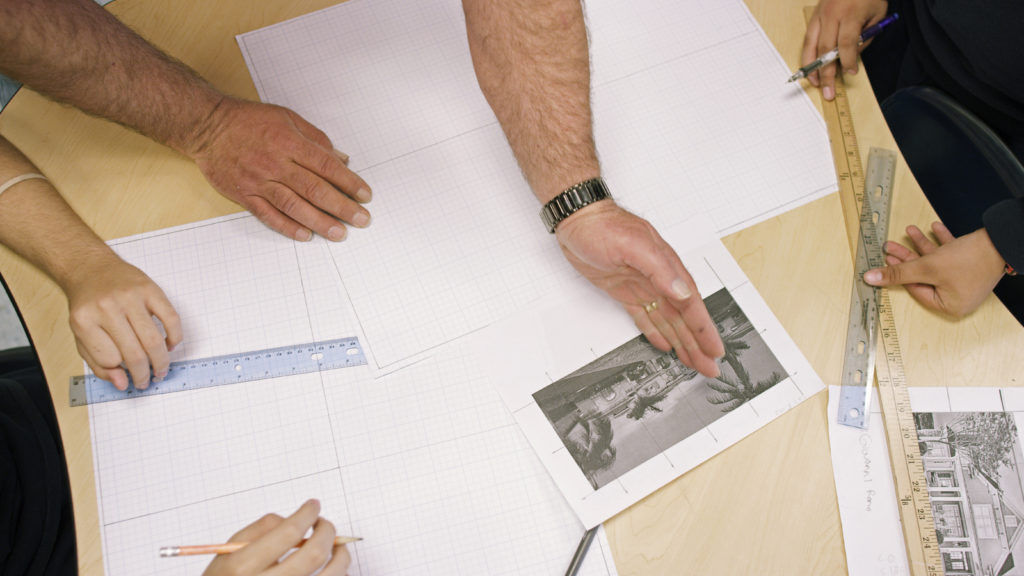
In Summit Learning, students spend the majority of class time in project-based learning, deeply immersed in real-world scenarios. So just what is a real-world scenario?
For 6th grade science students, it means using researching and testing ways to use geoengineering to combat climate change.
For 7th grade English students, it means using argumentative claim to write a letter to a local leader to stand up for an injustice in their community.
For Carl Stalla‘s 8th grade math students in Chicago, it means becoming an architect and designing their dream home.
Listen to Stalla talk about his dream home project in this YouTube video.
In the Dream Home project, 8th graders apply geometry and personal finance knowledge to design and budget for their dream home. Stalla, a math teacher at Chicago Public Schools’ Lee Elementary for 15 years, created the project to force students to think about their future beyond the classroom — not only drawing the blueprints, but envisioning a path to buying the home someday.
From Home Builder to Math Teacher
Prior to teaching, Stalla built homes in Naperville, Illinois for a living. He decided to bring that expertise to the classroom. Teaching is his way of paying it forward, he says.
“Math can be boring, it can be worksheets,” Stalla says. “I try to make it more lively.”
In the project, students imagine they are college graduates with their first job, on the market for their first home. After browsing blueprints on House Plans, an online collection of ready-made architectural plans, students pick one and divide the image into 2×2-inch boxes. Students then use proportional relationships to transfer the design to architectural paper, divided into 4×4-inch boxes. The top half of the architectural paper features the exterior design of the home, the bottom half is reserved for floor plan design.
“We’re talking about geometry, we’re talking about angles, proportions,” he says. “There’s a ton of math that goes into these drawings. And the kids are so engaged in it.”
Why are they engaged?
“Because it’s their house, it’s their home, it’s their dream,” Stalla says. “It’s their life they are going after. It’s a reminder to go to college, to get that job. It’s a reminder that there’s a big world out there and to go out and get it.”
Projects That Mimic A Student’s Future
Stalla hopes by the end of the project, students will be able to align their daily schoolwork with future work ambitions.
“They leave 8th grade with a dream home in their pocket and a plan to get there,” he says, adding that many students come back to tell him they still have their house plan on their bedroom wall, some of them framed by their parents.
Some of Stalla’s former students took the real-world project and made it a reality of their own.
Checking in with alumni last year,
Stalla found that 12 of his former students
are pursuing careers in architecture
thanks to the Dream Home project.
One former student went on to the University of Wisconsin with a full scholarship and upon graduating and securing her first job, made her dream home a reality. She came back to share the news with Stalla.
“It gave me the chills,” he says.

Adapting Your Existing Curriculum To The Summit Learning Platform
The Summit Learning Platform houses more than 200 projects and includes a series of built-in checkpoints from teachers, peers, and self. Teachers can choose from these projects depending on their curriculum requirements and student needs. But if you’re a seasoned teacher, that doesn’t mean you have to abandon the curriculum and projects you’ve developed on your own.
Stalla taught the Dream Home project for more than a decade, but when his school, Lee Elementary, implemented Summit Learning last year, he adapted his project for the Summit Learning Platform. Stalla’s colleague, Language Arts teacher Kathleen Bourret, also loves the ability to import her own curriculum to the Platform.
“I can make the program work for me,” Bourret says. “Once I started realizing that I can take the units I’ve created and put them on the platform, I fell even more in love with Summit.”
Stalla says teaching the project with the Summit Learning model is much smoother. Previously, he struggled with covering all the necessary geometry concepts before starting the project.
“Summit has everything in the math concept units that I need to teach before we start the drawings,” he says. “It’s a continual flow.”
Do you have a Summit Learning Project you would like featured on the blog? Share your Summit story with us! Stay tuned on the blog as we continue to feature more project-based learning in action in our showcase school series.

